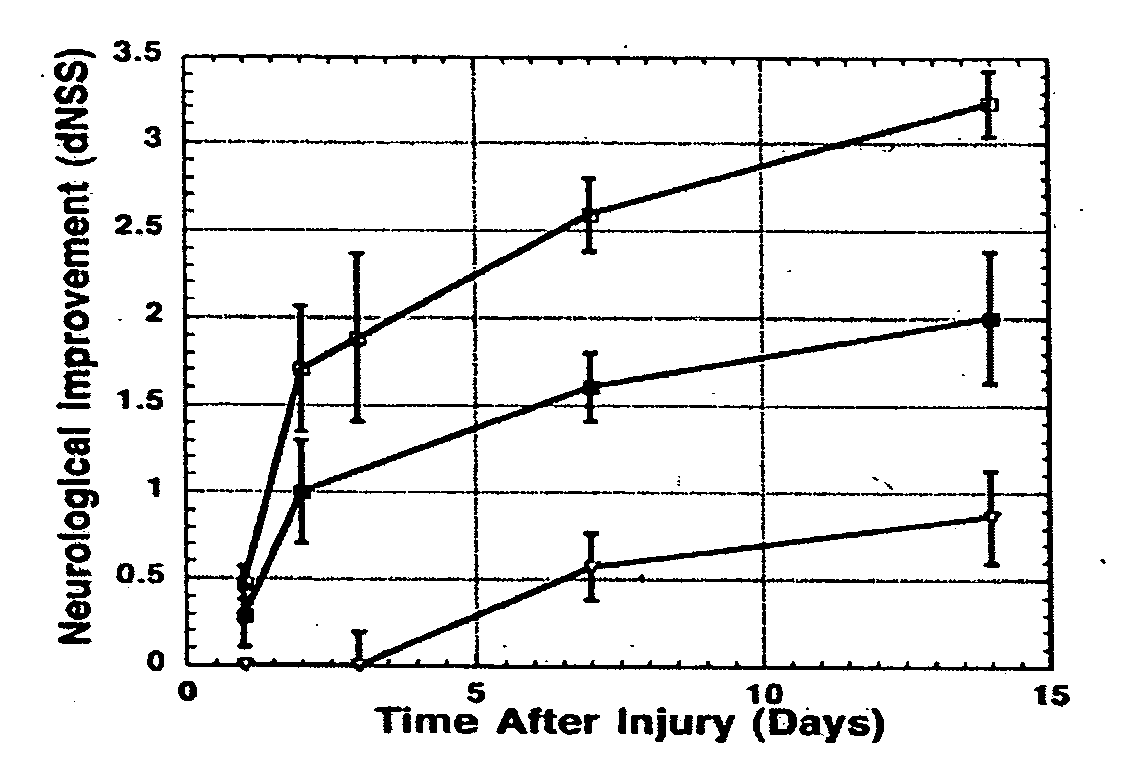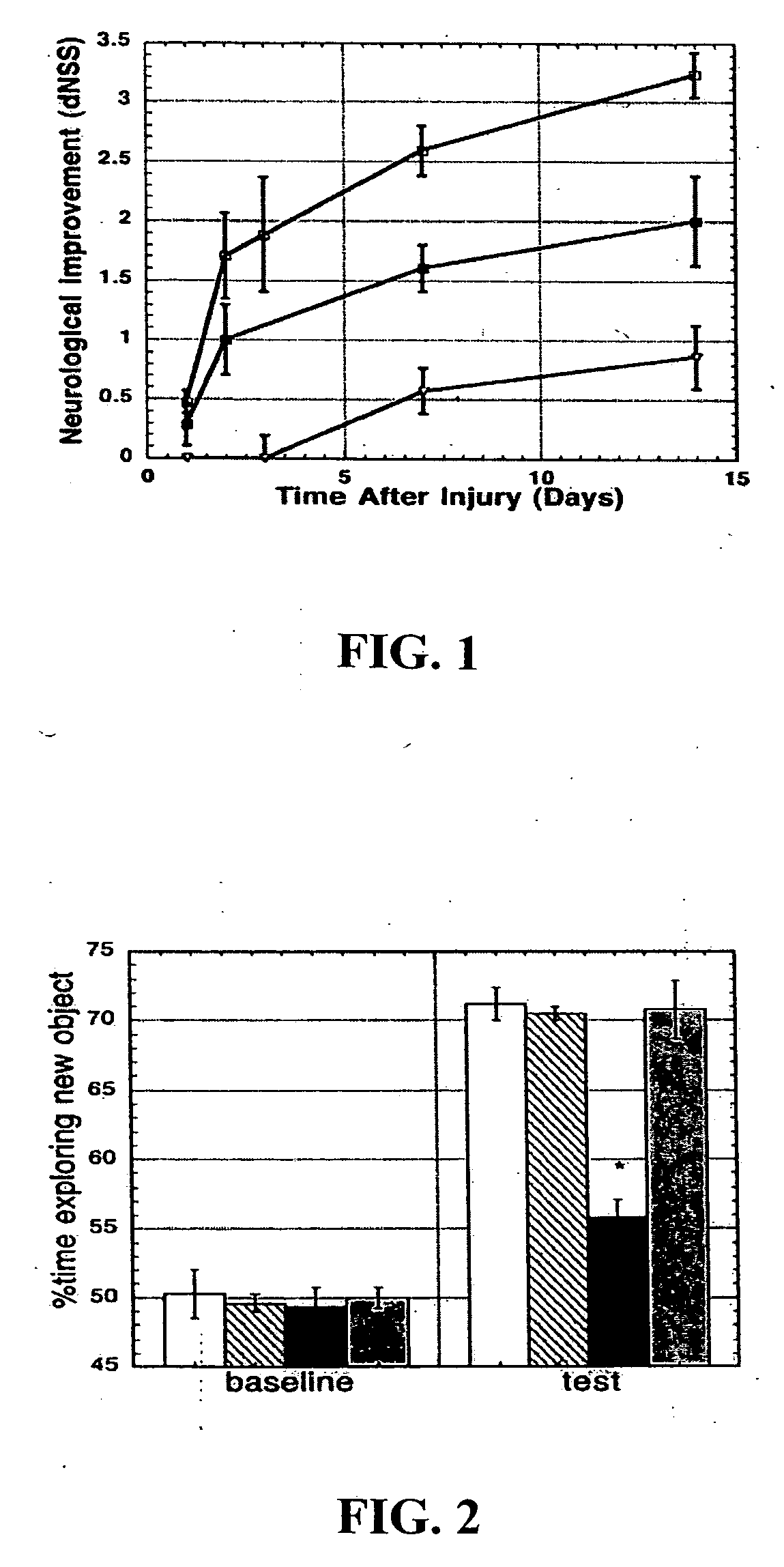Use of compositions that increase glutamate receptor activity in treatment of brain injury
a composition and glutamate receptor technology, applied in the field of brain injury brain injury treatment, can solve the problems of delayed neuronal death, prolonged blockade of nmdar, and failure of glutamate n-methyl-d-aspartate receptor blockers to show efficacy in treating severely head injury patients, etc., to achieve the effect of increasing glutamate receptor activity, inhibiting the uptake of glutamate, and increasing glutamate releas
- Summary
- Abstract
- Description
- Claims
- Application Information
AI Technical Summary
Benefits of technology
Problems solved by technology
Method used
Image
Examples
example i
Dynamic Changes in N-methyl-D-aspartate Receptors after Closed Head Injury in Mice: Implications for Treatment of Neurological and Cognitive Deficits
[0028] Morphological Consequences of CHI. Closed head injury resulted in time-dependent pathological changes in brain morphology, including intraparenchymal bleeding and edema, as described (Chen et al., J. Neurotrauma 13, 557-568 (1996); Yatziv et al., J. Cereb. Blood Flow Metab. 22, 971-978 (2002); Beni-Adani et al., J. Pharmacol. Exp. Ther. 296, 57-63 (2001); Stahel et al., J. Cereb Blood Flood Metab. 20, 369-380 (2000); Shohami et al., J. Cereb. Blood Flood Metab. 23, 728-738 (2003); Grossman et al., NeuroImage 20, 1971-1981 (2003)). Animals killed 15 min to 24 h after CHI had some intracranial bleeding at the site of impact but no lesions. By day 7, all animals had a distinct cavitation lesion surrounded by dense gliosis corresponding to the area in the immediate vicinity of the impact. The brain on the side contralateral to the i...
PUM
| Property | Measurement | Unit |
|---|---|---|
| diameter | aaaaa | aaaaa |
| height | aaaaa | aaaaa |
| volume | aaaaa | aaaaa |
Abstract
Description
Claims
Application Information
 Login to View More
Login to View More - R&D
- Intellectual Property
- Life Sciences
- Materials
- Tech Scout
- Unparalleled Data Quality
- Higher Quality Content
- 60% Fewer Hallucinations
Browse by: Latest US Patents, China's latest patents, Technical Efficacy Thesaurus, Application Domain, Technology Topic, Popular Technical Reports.
© 2025 PatSnap. All rights reserved.Legal|Privacy policy|Modern Slavery Act Transparency Statement|Sitemap|About US| Contact US: help@patsnap.com


